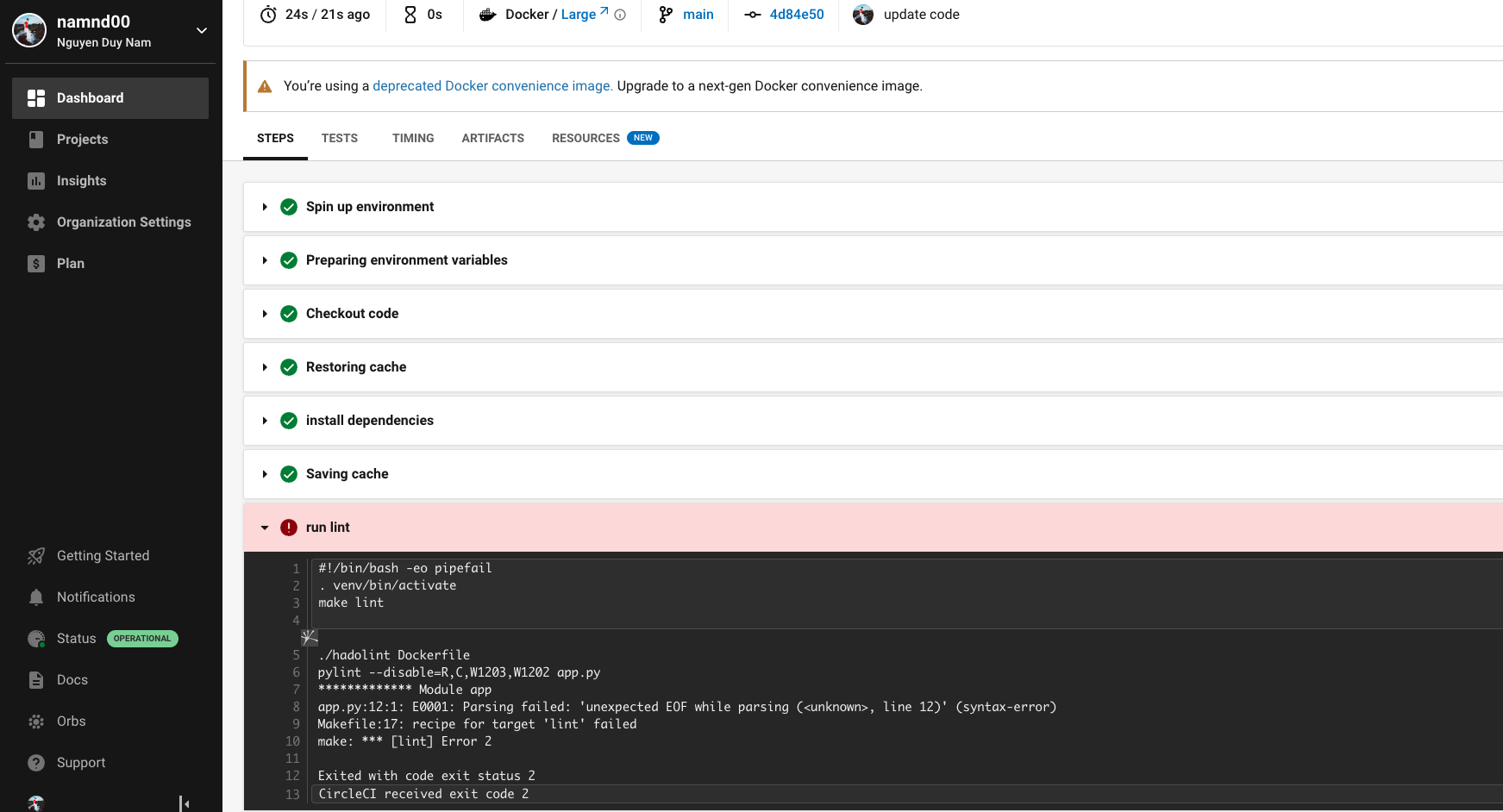This project marks the successful culmination of the final Capstone project and the Cloud DevOps Engineer Nanodegree at Udacity. Link github: https://github.com/namnd00/capstone-cloud-devops-engineer
Throughout the Cloud DevOps Nanodegree program, I put into practice the skills and knowledge acquired, encompassing various areas such as utilizing Circle CI for implementing Continuous Integration and Continuous Deployment, constructing pipelines, deploying clusters using CloudFormation, creating Kubernetes clusters, developing Docker containers within pipelines, and working proficiently within the AWS environment.
For deploying the Kubernetes Cluster, I employed AWS CloudFormation, which involved four distinct components:
- Networking: Establishing proper connectivity between the new nodes and the Cluster.
- Elastic Kubernetes Service (EKS): Creating the Kubernetes Cluster using EKS.
- NodeGroup: Defining rules for operating and creating instances specific to each NodeGroup within the EKS Cluster.
- Management: Configuring and managing the Cluster, its deployments, and services. To ensure redundancy, I set up two management hosts, providing an extra layer of failover protection in case one of them experiences an issue.
Can you access to public ELB DNS:
http://abe0d7ed7d3cf4b1fbe5ad345c9387c8-1846472379.us-east-1.elb.amazonaws.com/

To facilitate the testing and deployment process, I utilized CircleCI to construct a CI/CD Pipeline. This pipeline allows for manual testing and deployment of changes, ensuring that they are thoroughly evaluated before being automatically deployed to the Cluster via cloudformation.
Linting is employed to verify the syntactic correctness of both the Application and Dockerfile. This crucial process ensures that the code maintains a high level of quality at all times.
- Linting steps successfully:
- Linting steps failed:





